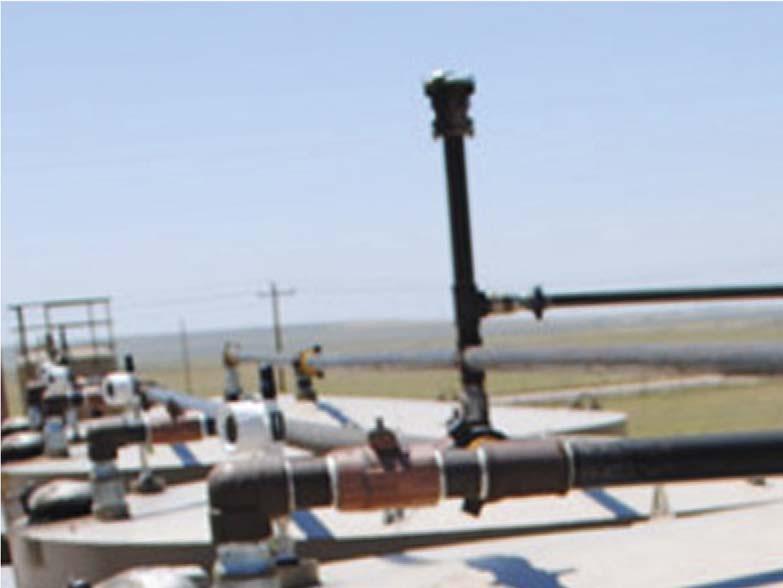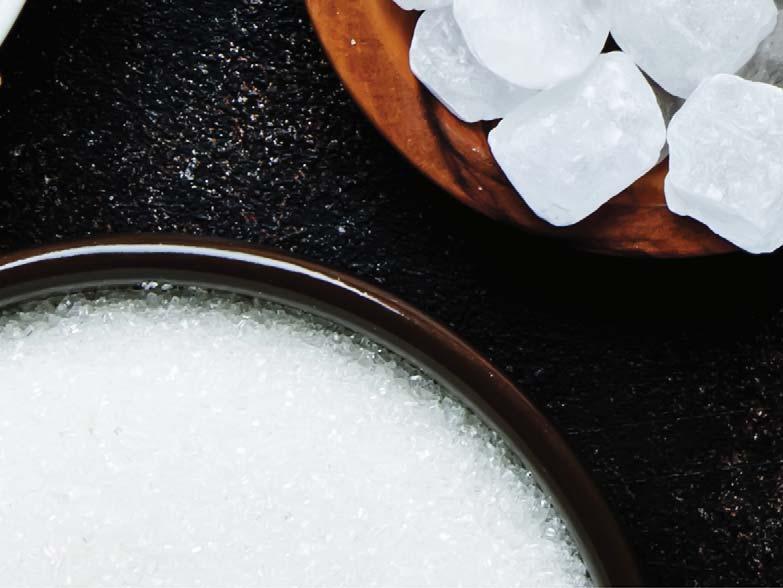
6 minute read
Encapsulating the problem




Dr Ellie Mavredaki and Sam Toscano, SUEZ – Water Technologies & Solutions, investigate the advances in encapsulated treatment technologies that mitigate scale formation.




One of the most common causes of flow assurance upsets in oilfields is inorganic scale formation within produced water. The scale has the tendency to precipitate and/or deposit in the formation, production string, process equipment and re-injection facilities, resulting in production challenges and equipment failures. Mitigation of scale is typically achieved through continuous or batch injection of liquid scale inhibitors in the aqueous phase.
Continuous injection of scale inhibitors is accepted as the most effective method for produced water treatment on a global basis, even though the volumes of the scale inhibitors required for comprehensive scale control are usually considerable. Often, more cost-effective application methods are required, mainly due to: Ì Lack of equipment, such as pumps, especially for brownfields with a high number of producing wells.
Chemical ConcentraƟ on Gradient


Encapsulated Product
Figure 1. Placement of encapsulated product in the well.

Figure 2. Encapsulated application.
High CAPEX for multiple scale inhibitor injection points (greenfields). Additional costs for transporting chemicals to producing fields located in remote areas.
Deployment of encapsulated scale inhibitors offers a more cost-effective solution for scale mitigation, as there is no need for surface pumps or power supplies.
The application involves direct injection of the encapsulated product as an aqueous suspension (slurry) into the rat hole (Figure 1) by applying it either down the production tubing or the backside of a packer-less well (Figure 2). The product slowly releases the active scale inhibitor by a diffusion mechanism, providing continuous inhibition of scale in the well tubular and pumping equipment. Ì By selecting this type of application, the key benefits are: Protection of the tubular and equipment starts immediately as there are no time delays for the chemical to reach the target zone. Ì The risk for chemical undertreatment is minimised as the chemical has the tendency to remain in the aqueous phase rather than adsorbing on the formation. Ì The risk of missing chemical treatment due to transportation delays or weather conditions is minimised, as encapsulated scale inhibitor treatments are required less frequently. Ì The site personnel deal with fewer toxic chemicals as the application requires fewer handling operations.
Encapsulated scale inhibitors are highly beneficial when successfully applied. To provide assurance that the application of these chemicals will be effective, both the operator and the chemical vendor need to consider the production and operational conditions. For such treatment to be applicable, it is necessary that either wells are packer-less or that tubing can be used directly for guiding the solid pellets to the rat hole.
When it comes to encapsulated scale inhibitor treatments, decision-making is further supported by: Ì Desktop thermodynamic modelling, for predicting the scale types that have potential to precipitate and to what extent. Ì Field deposits collection, analysis, and evaluation. Ì Downhole temperatures profile, for chemical inhibitor thermostability check. Ì Rat hole dimensions evaluation. Ì Cost comparison of encapsulated scale inhibitor treatment vs conventional continuous chemical injection and/or vs squeeze treatment.
Several operators are currently deploying encapsulated scale inhibitors for crude oil and/or gas-producing wells. The products have also shown efficiency in completions and fracturing operations, providing a long-term resolution to production challenges.
Considering the tight legislation on produced water treatment and freshwater consumption limitations, applications of encapsulated scale inhibitors are expected to increase by 20% on a global basis.
Case study
A conventional oil and gas operator, producing approximately 700 m 3 /d of crude oil formation with water reaching 1700 m 3 /d, experienced multiple production well fractures at a depth between 3100 m and 3450 m.
Scale precipitation occurred within the reservoir fractures as well as within the electro-submersible pumps (ESPs) located between 2900 m and 3100 m. To mitigate the production
challenges caused by scale, the operator performed well interventions that resulted in high operating and lifting costs.
The desktop analysis revealed the potential for calcium sulfate (CaSO 4 ) precipitation at a temperature above 120˚C. At higher temperatures, scale precipitation was expected to be more severe, indicating an increase in scale deposition potential within the ESPs where the motor skin temperature was above 145˚C. Further analysis of the produced water, as received from different wells, highlighted potential incompatibilities

among the mixed waters.
Inspection of the pumps and production tubing highlighted scale formation in the internal and external areas of the equipment, with most of the scale deposited in the motor areas. Deposit analysis confirmed CaSO 4 as a principal type of scale, with calcium carbonate (CaCO 3 ) present to a lesser extent. Figure 3. Intervention duration life for wells 1 and 4.
To provide effective, long-term control of the scaling tendencies of the water throughout the production system, a strategy to treat the water with an encapsulated product, as it was produced from the reservoir, was selected. Each of the wells was treated with an effective encapsulated scale inhibitor. The product was applied downhole to each well individually.
Calculations for each individual encapsulated treatment were performed based on the space available at the bottom of each well, the well’s daily production and the duration of the desired treatment, which was 1 year.
Following the treatments with the encapsulated product, the frequency of the failures in the wells decreased drastically and productive well operation time increased significantly. In some of the wells, the failure frequency dropped by as much as 80%. Figure 3 shows the last six interventions for wells 1 and 4 respectively. Only the last intervention was under treatment with the encapsulated scale inhibitor. Once the encapsulated product was applied, the pumps’ run-life increased to more than 500 days.
By monitoring the inhibitor residuals, SUEZ has been able to review the progress of the treatment and determine when it is necessary to apply the next
Moving forward, the focus will be on improving encapsulated scale inhibitor chemistries and optimising treatments to achieve even longer scale control within produced water.
Encapsulating a wider range of chemistries – including but not limited to corrosion inhibitors, biocides, wax inhibitors, and foamers – is being explored. Some treatments have already been successfully applied, while other treatments are currently undergoing field trials.

encapsulated treatment. Monitoring was carried out via phosphate residuals measurements from produced water samples collected periodically from surface sample points.
Residual values indicated that the volume of the encapsulated scale inhibitor initially injected in the rat hole was enough to control the scaling tendency of the water.
Considering the cost of each intervention and the loss of profit during the well shutdowns (2 – 3 days), the operational savings per well were estimated at US$40 000. The application of the encapsulated scale inhibitor also generated operational improvements in lifting equipment. MICRO AND NANO CONNECTORS FOR EXTREME ENVIRONMENTS

THE PETROLEUM-INDUSTRY T MICRO AND NANO SIZED CONNECTORS ARE SPECIFICALLY DEVELOPED S FOR THEIR SMALL SIZE AND F RUGGEDNESS, TO PROVIDE R HIGH TEMPERATURE, HIGH H
Conclusion
Encapsulated scale inhibitors have exceeded expectations in both treatment duration and cost-effectiveness.
DENSITY AND HIGH SHOCK D RESISTANCE COMMONLY NEEDED IN DOWN-HOLE, RESEARCH AND RESERVE EXPANSION.










